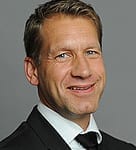Congress Newsletter 2021
EA21 Newsletter: Session 01S3 Anaesthesia and the environment
Saturday December 18, 09:30 – 10:30 – Channel 6
There is widespread recognition that anaesthesia must play its part in reducing the global carbon footprint. This three-part session on exactly this topic starts with a talk by Dr Nicolaas Sperna Weiland, Dept of Anaesthesiology and Centre for Sustainable Healthcare, Amsterdam UMC, Amsterdam, The Netherlands.
He will discuss how, in their sixth assessment report, the Intergovernmental Panel on Climate Change stated that ‘it is unequivocal that human influence has warmed the atmosphere’. Healthcare delivery is responsible for 4.4% of global greenhouse gas (GHG) emissions. For the operating room (OR), the carbon footprint may be broken down into three scopes: (1) anaesthetic gasses, (2) energy and (3) supply chain.

Secondly, energy consumption is six times higher per square metre in the OR, than in the rest of the hospital. This is mainly attributable to the air treatment facility in the OR. A significant reduction in energy can be achieved by switching off these systems when the operating room is not in use. Strikingly, this is still not common practice in many hospitals.
He concludes: “Lastly, the impact of material use can be hard to quantify because the entire lifecycle (from production to waste) needs to be taken into account. Lifecycle assessments have shown that reusable equipment, despite energy use for sterilisation, usually halves the carbon footprint.”
The next talk on “Why should anaesthesiologists and intensivists care about climate change?” will be given by Dr Jane Muret, Head of Anesthesia-Intensive Care & Pain Management Department, Institut Curie Paris, France.
She says: “There is now a growing body of literature quantifying the impacts of climate change on human health. These impacts endanger our health by affecting our food and water sources, the air we breathe, our community infrastructure, and our housing and health systems.”
More than any other medical specialists, anaesthesiologists and intensivists are on the front line facing new climate-linked life-threatening pathologies as demonstrated by the still ongoing Covid crisis.
Dr Muret says: “Paradoxically, pollution generated in the service of healthcare’s mission to save and improve lives is causing harm to people and the planet. Our healthcare system itself contributes significantly to climate change: it accounts for 5 to 10 % of GHG emissions in developed countries as well as other forms of air pollution.”
She concludes: “Anaesthesiologists and intensive care physicians must then consider what can be done to reduce the carbon footprint of not only their medical practice but also of their private lives!”
The final talk on “Environmental-friendly choices in paediatric anaesthesia” will be delivered by Dr Peter Brooks, Consultant Anaesthetist, Magill Department of Anaesthesia, Chelsea & Westminster Hospital, London, United Kingdom.
He will discuss that although anaesthesia providers are a relatively small professional group in the global context, the choices they make contribute significantly to healthcare-related carbon emissions. If they are committed to reducing the contribution these choices make to global warming and building an environmentally conscious practice, they need to develop carbon literacy.
The delivery of paediatric anaesthesia is a carbon hotspot within the hospital. Choosing inhalational agents with lower global warming impacts and reducing dependence on nitrous oxide is possible in paediatric anaesthesia. However, systematically switching to lower emissions forms of anaesthesia such as local, regional and intravenous general anaesthesia agents, presents a much greater challenge.
Dr Brooks concludes: “The continued pre-eminence of inhalational anaesthesia in paediatric practice is not due to any clinical superiority but due to a clinical tradition. We need to change the educational model that makes such acceptance almost inevitable and improve the training and experience of paediatric total intravenous anaesthesia.”
References
- Principles of environmentally-sustainable anaesthesia: a global consensus statement from the World Federation of Societies of Anaesthesiologists, https://doi.org/10.1111/anae.15598
- White and Shelton. Anaesthesia. 2020; 75: 451-454
- Hügel et al. Pediatric Anesthesia. 2020; 30: 874–884
- Anderson and Bagshaw. Anesthesiology. 2019; 131: 164–185
- Lauder. Pediatric Anesthesia. 2015; 25: 52–64
Read More of our special newsletter covering our virtual congress









